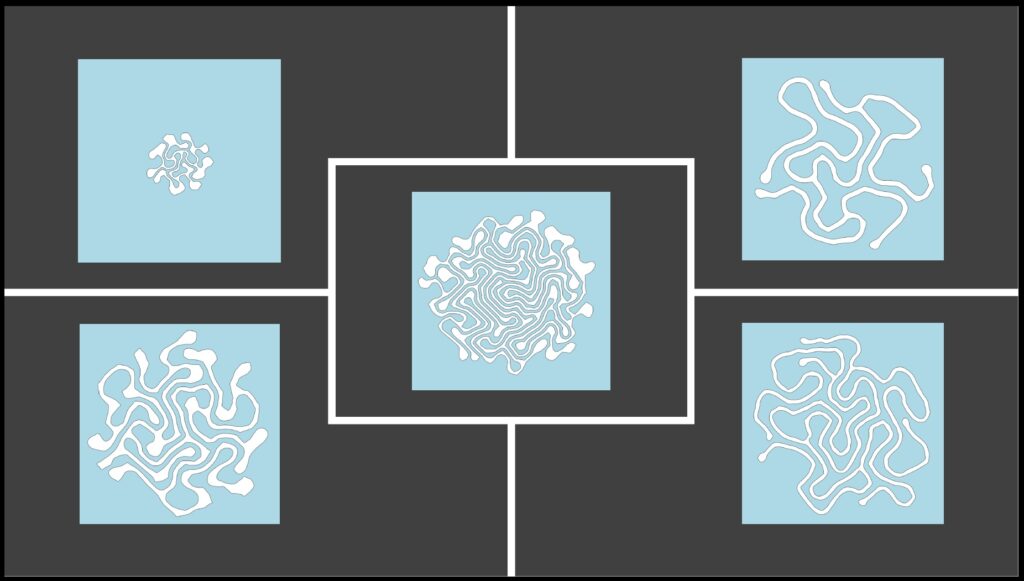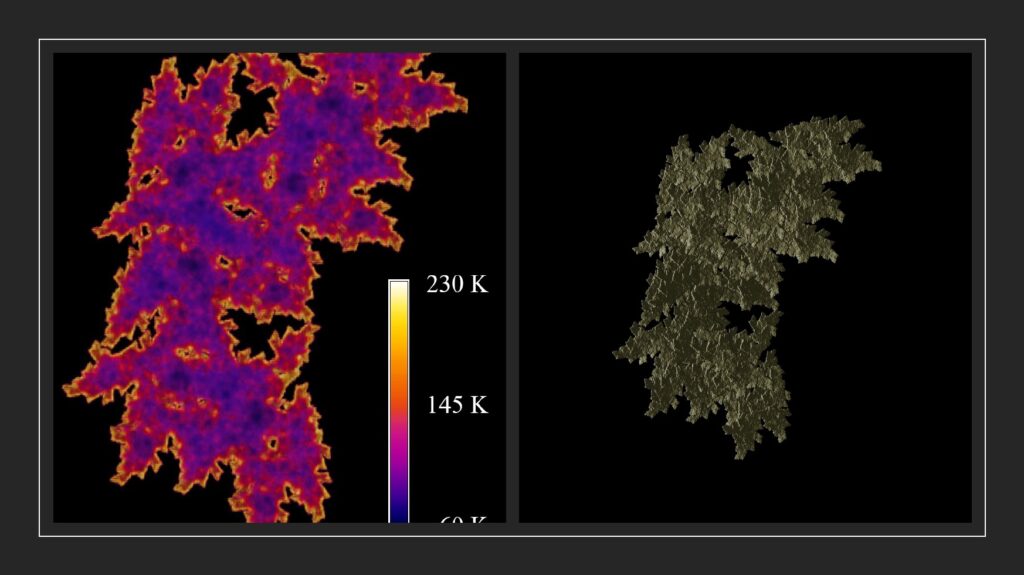Objective:
Understand the variety of patterns that form under the combined action of Coulomb friction, capillary- and viscous forces and upgrade the theory and simulations to deal with the whole range of relevant hydrodynamic forces. We will apply this modelling to a real world geological problem of induced seismicity.

Description
We will build algorithmic models that reproduce the many patterns observed in the laboratory, as well as to search for geological consequences of such pattern forming processes. As the deformation rates increase, different forces come into play. First, viscous forces will qualitatively change the displacement patterns by gradually de-mobilizing the Coulomb friction. Then inertial forces will enter the picture along with a stick-slip dynamics. The corresponding numerical models, which take these forces into account, become more challenging as the forces become less local. These models will be built, from the simple to the more complex. We will extend and upgrade existing studies by introducing viscous forces in the invading rather than the defending fluid . We will describe the new patterns by phase-diagram describing the effects of stabilizing, rather than de-stabilizing viscous forces. As a geological application where the combination of frictional- and fluid pressure forces govern the deformation of a granular material we will model the flow effects leading to induced seismicity from geothermal power plants. This topic is focused on the effects of the combined injection and extraction of water from geothermal wells near Strasbourg, the objective being to minimizing risks of induced seismicity. Using geological data from the relevant fault-line and existing seismic records the modelling of the fluid pressure evolution may be used both to explain the onset of previous earthquakes (Strasbourg 2019) and to devise injection/extraction procedures that have a more local and smaller de-stabilizing effect on the fault-zone, thus reducing the risk of triggering seismicity on the regional faults.

Deliverables
Algorithmic models able to predict phase diagrams and provide a quantitative understanding of the dynamics that underlie the patterns of deformable porous media, in particular in the viscously stabilized case. An understanding of optimal operational procedures to avoid induced seismicity from geothermal wells in fault zones.
Principal Investigator: Professor Eirik Grude Flekkøy.
Recent articles
- Campbell, J.M, Sandnes B., Flekkøy E..G., Måløy K.J. 2022 Dynamics of Dendritic Ice Freezing in Confinement CRYSTAL GROWTH & DESIGN 22 (4) , p. 2433-2440
- Vincent-Dospital, T, Toussaint, R, Couchard A., Flekkøy E.G., Maloy, K.J. 2020 Thermal dissipation as both the strength and weakness of matter. A material failure prediction by monitoring creepSoft Matter 17 p. 4143-4150
- Xu L., Szymczak P., Toussaint R. , Flekkøy E.G., Måløy K.J. Frontiers Phys. 2020 Dissolution Phase Diagram in Radial Geometry SOFT MATTER 17 (15) , pp.4143-4150
- Olsen K.S., Angheluta L., Flekkøy E.G. 2020 Escape problem for active particles confined to a disk Phys. Rev. Research 2, 043314
- Luu, J.X, Flekkoy, E.G. , Toussaint, R 2020 ‘Oumuamua as a Cometary Fractal Aggregate: The “Dust Bunny” Model. Astrophys. J. Lett. 900 (2)
- Flekkoy, EG, Luu, J and Toussaint, R 2019, The Interstellar Object ‘Oumuamua as a Fractal Dust Aggregate. Astrophys. J. Lett. 895 (2)
- Dumazer G., SandnesB., Måløy K.J., Flekkøy E.G. 2020 Capillary bulldozing of sedimented granular material confined in a millifluidic tube Phys. Rev. Fluids5, 034309
- Xu, Le and Szymczak, Piotr and Toussaint, Renaud and Flekkoy, Eirik G and Maloy, Knut J. 2019 Experimental Observation of Dissolution Finger Growth in Radial Geometry Frontiers Phys. 7
Papers in pipeline
- Thorens L., Måløy K. J., Flekkøy E. G. Santucci S. 2022 Capillary washboarding during slow drainage of a frictional fluid, to appear in Phys. Rev. Lett.
- Zhang D., Campbell J., Eriksen J. A., Flekkøy E. G., Måløy ,K.J., MacMinn C. 2022, Frictional fluid instabilities shaped by viscous forces, under review Nature Comm
